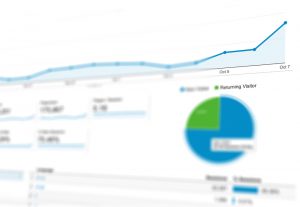
Have you ever thought about how advertisers seem to know so much about your online habits? Perhaps you looked at an item online last week, and today you see an advertisement on a separate website. Maybe you want to know how companies know what links you’ve clicked or that you opened an email they sent you.
If you run a website, you might want to know a way to keep track of user’s data yourself. Collecting data on how visitors find and use your website is important and allows you to know how effective your marketing campaigns are. It is difficult to create content for your audience if you aren’t sure who they are and how they behave, which is why tracking pixels are popular.
What Is a Tracking Pixel?
The tracking pixel loads on a web page without the visitor noticing and is placed just above the body tag to reduce the chances of recognition. HTML tracking pixels are images that are hidden through CSS or are 1×1 pixel blending with the background. The pixels serve as a backup for devices that do not support JavaScript.
HTML tracking pixel code might look something like:
<img id="wpstats" src="https://stats.wordpress.com/g.gif?host=www.hostname.com&list_of_cookies_value_pairs;" alt="">
JavaScript tracking pixels have similarities to HTML pixels. However, JavaScript tracking pixels collect more information, but both are placed above the body tag of the document. However, because of how browsers execute JavaScript, there is no reason to hide them with CSS. Many marketers prefer JavaScript tracking pixels because they allow tracking of several actions with even tracking. Although not all devices render or have JavaScript enabled, making it a good idea to use HTML tracking as a backup.
JavaScript tracking pixel code might look something like this:
<script type="text/javascript" src="tracking.js"></script>
How Do Tracking Pixels Work?
When a website containing a tracking pixel is visited, the browser loads the pixel from an external server. Then it registers and notes the time, operating system, device type, browser type, screen resolution, and IP address in the server logs. It also detects whether a visitor is browsing inside a mobile app and the device’s manufacturer.
Some servers already contain user data, such as Facebook’s servers. This means they can identify visitors, match interactions, and create data profiles. This allows advertisers to target visitors based on data points that were previously unavailable. Several advertising networks use this type of data for behavioral re-targeting, visitor profiles, and marketing plans.
What are the Advantages of a Tracking Pixel?
Tracking pixels improve your website by giving you information about your audience. Meaning you can create a website and offers that better suit users’ wants and needs. It also allows you to differentiate the difference between users from bots by creating user profiles. By using IP addresses and user properties, you can create navigation paths and form a solid basis for web analysis.
Tracking pixels used in marketing emails show open and link click-through rates. By utilizing A/B testing, you can determine the most effective marketing strategies and create successful marketing emails. With the information you’ve collected from a tracking pixel, you can design effective, relevant, and interesting email campaigns.
Tracking pixels function similarly to cookies because they track user information and record with a file saved on the user’s device. However, more people are using techniques that block cookies with browser functions. Normal browsers cannot block tracking pixels, although some extensions, plugins, and programs can block tracking pixels.
Do you want a tracking pixel installed on your site to help your online marketing initiatives? Have more questions? Reach out to Nextfly Web Design today, and we will help you track your site today!

